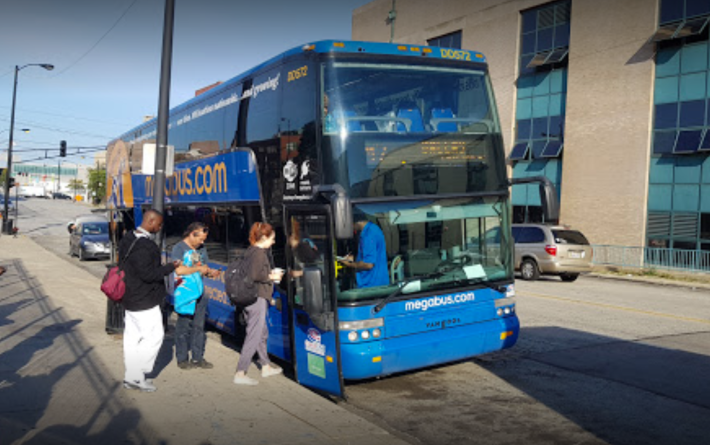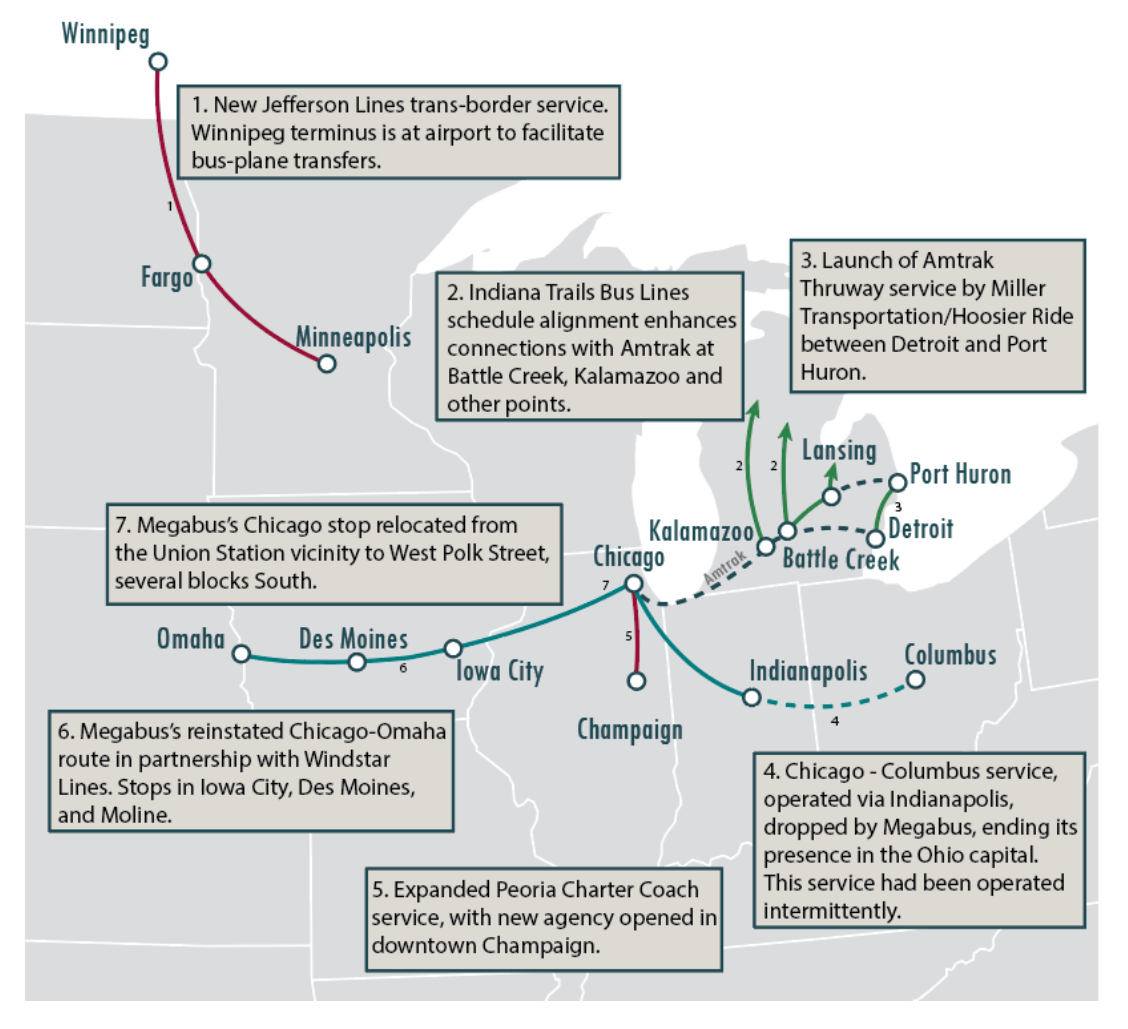When’s the last time you took a bus from Chicago to another city? If memory serves, for me it was several years ago when I chose Megabus as a cheaper, faster alternative to Amtrak for a trip to Indianapolis to check out bike facilities.
But according to a new study from DePaul University’s Chaddick Institute for Metropolitan Development, 2018 promises to be a banner year for intercity bus travel after years of relatively poor ticket sales due to cheap gas and a soft economy. New service options and technological advances are helping to increase interest in this sometimes-overlooked travel mode.
“Economic growth paved the way for new services, while luxury options and tech-oriented transformations push the sector in exciting new directions,” said Joe Schwieterman, director of the institute and lead author of the study. Industry expert Brian Antolin, a research affiliate at the institute, is co-author of the report. The researchers outlined trends including:
- Business-class and luxury bus services expanding to new markets, especially in Florida, New England, the Northeast and Texas. These services will increasingly offer reserved seating, similar to airlines.
- Tech-oriented bus lines and startups are using crowdsourcing and dynamic scheduling to attract new markets. Services like Rally Bus and Skedaddle only run buses when enough travelers express a willingness to pay for a set route and time.
- Guaranteed seating and e-tickets are becoming universal on all major bus lines, with Greyhound and Peter Pan rolling out e-tickets last year.
- There is a strong push by public agencies to coordinate intercity bus and rail service. Bus lines are also making greater use of public transit terminals, resulting in the closure of many traditional intercity bus stations.
More than two dozen new services became available during 2017. Several of the standby brands including BoltBus, Go Buses and Megabus launched service to several new cities, the study authors found. Greyhound Lines introduced extensive new schedules in the Northeast following the termination of its longtime agreement to coordinate schedules with Peter Pan Bus Lines. Premium services, including business-class offerings, are being rolled out in a particularly intensive way by carriers seeking to capitalize on the airport “hassle factor” and a desire to avoid driving amid worsening congestion. Five established carriers rolled out premium services, creating new travel options in many parts of the country for those who would otherwise fly, drive or take the train.
“America’s scheduled bus lines, after hitting a rough patch, are again on the move and adopting some surprising strategies to attract new customers,” noted Schwieterman. “Competition is as brisk as ever.”

The report notes that Cabin, a bus line between Santa Monica and San Francisco, launched in 2017 with “private sleeping cabins,” similar to Japanese-style capsule hotel rooms. Being able to sleep while lying flat, as well as to hang out in an onboard lounge, during the overnight trip may make the trip a more attractive alternative for customers who might not have otherwise considered bus travel. “Cabin represents a bold experiment away from the standard seating configuration used by other premium providers,” noted Antolin. “By positioning itself as a hospitality brand, it charts a new course for attracting more affluent clientele.”
The researchers report that technological innovation is also changing how intercity bus travel functions. Ticket aggregator sites like Wanderu are making it easier to book bus and train travel These sites are also making new pop-up services possible, such as that offered by OurBus, one of the fastest-growing startups of the year. “As more consumers turn to apps to make travel decisions, intercity bus operators are learning how to play the game, which means informing potential customers about ways to avoid the congestion of airports and the tedium of driving,” Schwieterman says.
The study also found that coordination between Amtrak and motor coach lines is improving, and it’s becoming more common for customers to travel to and from smaller communities by bus and train on a single ticket via the Amtrak Thruways bus program. “States are ramping up their efforts to create feeder bus service that support passenger-train routes,” Antolin says. “Integrating bus and train service is an effective way for governments to stretch budgets in a time of great fiscal stress.”

Local observations featured in the report include the diminishing number of Megabus routes in Chicago in recent years, including the elimination of routes to Omaha, Lansing, MI, and Grand Rapids, with the number of daily runs from Chicago dropping from 26 to 16. During this time the bus company moved its Chicago pickup and drop-off point from busy Canal Street, south of Union Station, to a new stop on Polk Street west of Canal, which moved it farther from the Loop and the Blue Line’s Clinton stop. However, in February 2017, Megabus restored its Chicago-to-Omaha service in partnership with Windstar Lines, with stops in Moline, Des Moines, Iowa City, and Lincoln, NE.





